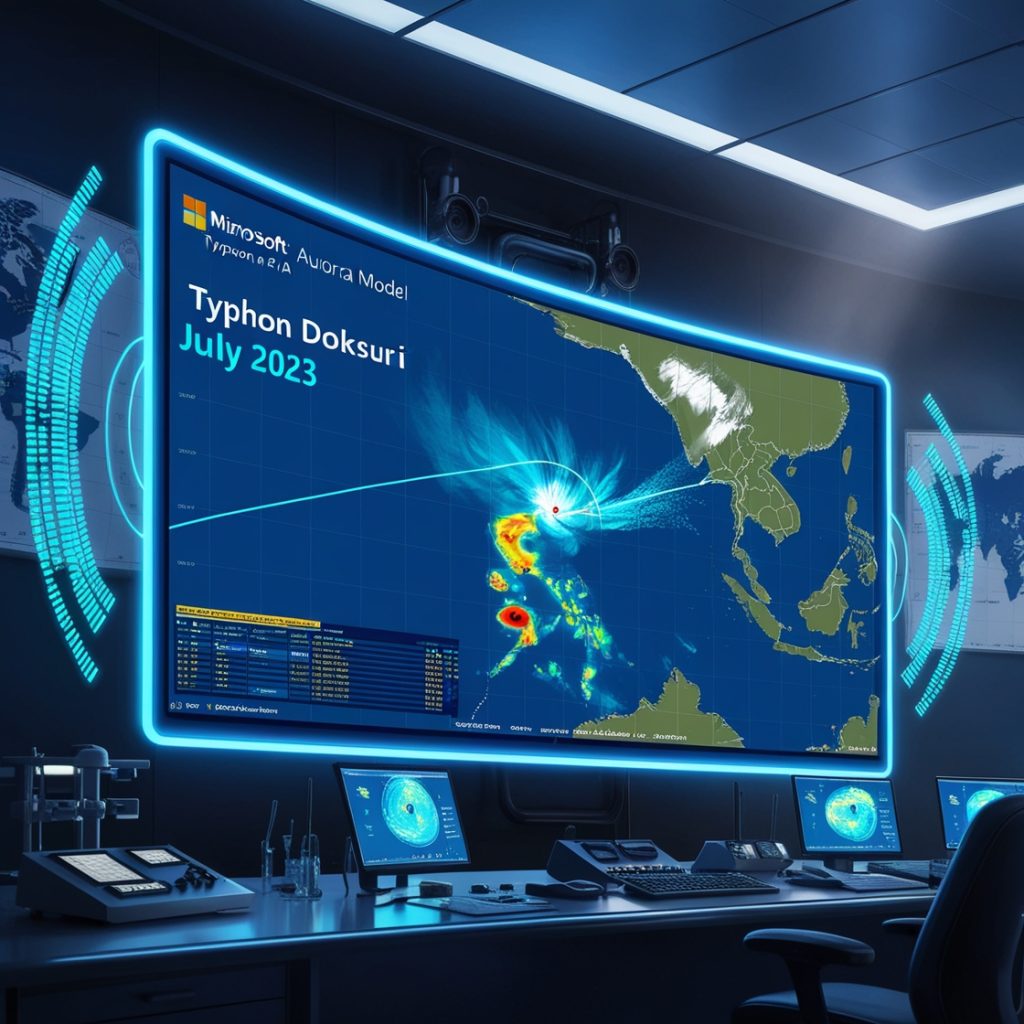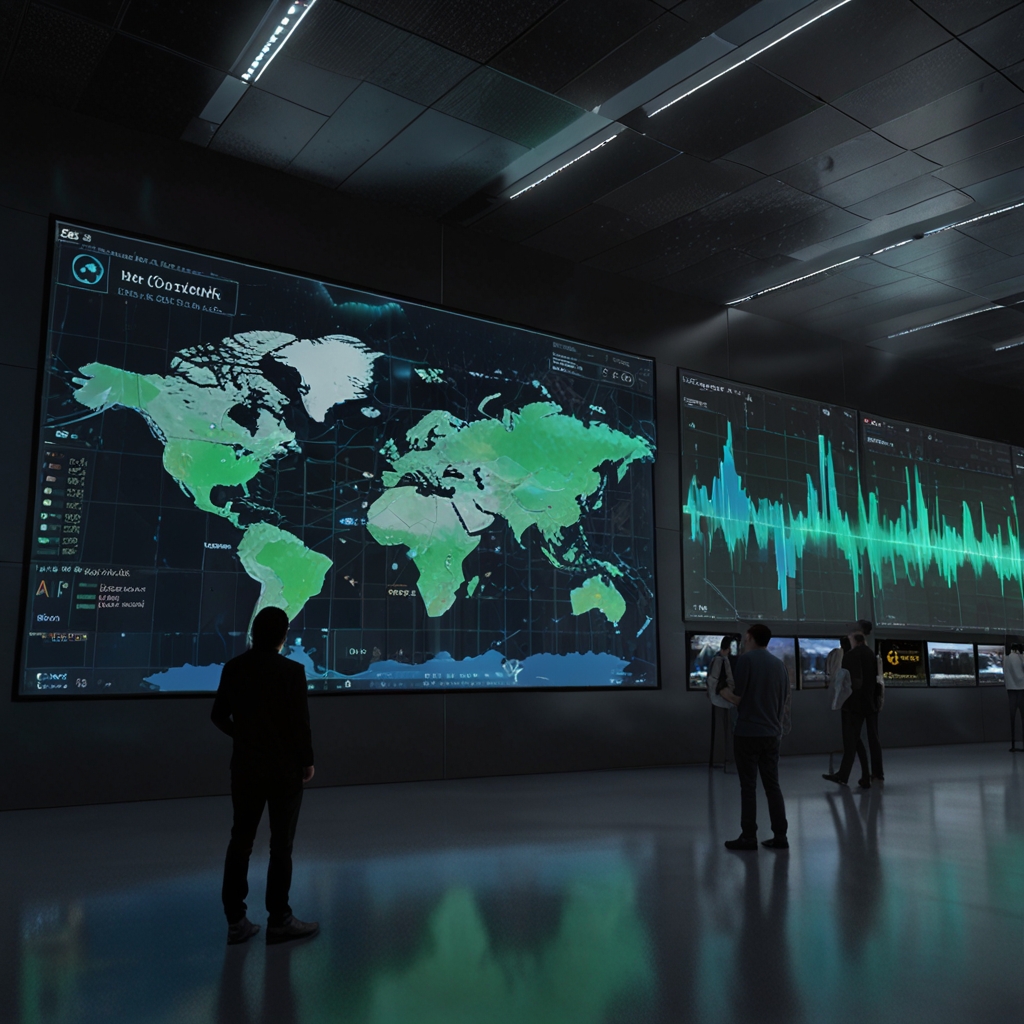The field of weather forecasting is undergoing a seismic shift, driven by artificial intelligence (AI) models that promise unprecedented accuracy and speed. At the forefront is Microsoft’s Aurora, a 1.3-billion-parameter foundation model introduced in June 2024 and detailed in a Nature paper on May 21, 2025. Aurora, developed by Microsoft Research, outperforms traditional numerical weather prediction (NWP) systems and rival AI models in forecasting weather, air quality, ocean waves, and tropical cyclone tracks.

From a researcher’s perspective, Aurora represents a breakthrough in Earth system modeling, offering transformative prospects for science and society. However, its reliance on vast datasets, challenges in data-sparse regions, and competition from rival models pose significant hurdles. This article explores Aurora’s capabilities, its potential to reshape forecasting, and the challenges it faces in a rapidly evolving AI landscape.
Aurora’s Breakthrough: A Foundation Model for Earth Systems
Aurora’s innovation lies in its foundation model architecture, a paradigm shift from traditional NWP systems that rely on physics-based equations and supercomputers. Trained on over one million hours of diverse geophysical data from satellites, radar, weather stations, and simulations, Aurora leverages a 3D Swin Transformer with Perceiver-based encoders and decoders to capture complex atmospheric dynamics. This pre-training phase allows Aurora to develop a general understanding of weather patterns, which is then fine-tuned for specific tasks like 10-day global weather forecasts, air pollution prediction, and cyclone tracking. According to the Nature study, Aurora outperforms the European Centre for Medium-Range Weather Forecasts (ECMWF) model in 92% of 10-day forecast variables at 0.1° resolution (approximately 11 km), achieving results in seconds compared to hours for traditional systems.

A prime example is Aurora’s performance during Typhoon Doksuri in July 2023, where it accurately predicted the storm’s landfall in the Philippines four days in advance, outperforming operational forecasts that mispredicted its path toward Taiwan. This precision, coupled with a ~5,000x computational speedup over the ECMWF’s Integrated Forecasting System (IFS), highlights Aurora’s efficiency. Senior researcher Megan Stanley notes, “Incorporating diverse data sources results in greater accuracy and better forecasting of extreme events,” a critical advantage as climate change fuels more severe weather.
Aurora’s versatility extends beyond weather to environmental forecasting. Fine-tuned on Copernicus Atmosphere Monitoring Service (CAMS) data, it predicts air pollution levels with 74% better accuracy than state-of-the-art chemistry simulations at 0.4° resolution. Its ability to forecast ocean wave heights and tropical cyclone tracks further demonstrates its potential as a comprehensive Earth system model. By making its source code and model weights publicly available, Microsoft enables researchers worldwide to adapt Aurora for tasks like renewable energy forecasting, democratizing access to advanced tools.
Prospects: Transforming Science and Society
From a researcher’s perspective, Aurora’s prospects are profound. Its foundation model approach, which combines broad pre-training with task-specific fine-tuning, offers a scalable framework for Earth system prediction. Unlike traditional NWP models, which require decades to develop and billions in computational costs, Aurora was fine-tuned in weeks on modest hardware. This efficiency could accelerate scientific discovery, enabling researchers to explore new domains like sea ice dynamics, flood prediction, or wildfire risk assessment. Paris Perdikaris, a co-author and former Microsoft researcher, emphasizes, “Aurora’s ability to be fine-tuned for diverse applications at modest expense represents a step toward democratizing accurate Earth system predictions.”

The model’s high-resolution forecasting (0.1°, or ~11 km) is a game-changer for hyper-local predictions, crucial for urban planners and disaster response teams. For instance, Aurora’s ability to resolve weather changes every six miles outperforms rival AI models like Google DeepMind’s WeatherNext, which operate at coarser resolutions (~15 miles). This granularity enhances its utility in sectors like agriculture, transportation, and insurance, where precise forecasts can mitigate economic losses. Posts on X reflect enthusiasm, with @satyanadella highlighting Aurora’s publication in Nature as a “breakthrough” for environmental forecasting.
Aurora’s open-source approach fosters global collaboration, potentially transforming data-sparse regions like developing nations or polar areas. By requiring less task-specific data for fine-tuning, it could empower local researchers to generate accurate forecasts without expensive infrastructure, addressing gaps where traditional models falter. Its integration into Microsoft’s MSN Weather app, with hourly forecasts and enhanced parameters like cloud cover, demonstrates real-world applicability, setting a benchmark for consumer-facing AI tools.
Challenges: Data, Transparency, and Extremes
Despite its promise, Aurora faces significant challenges. Its reliance on extensive datasets—over one million hours of weather and climate data—raises concerns about performance in data-sparse regions. Areas with limited weather stations, such as parts of Africa or the Arctic, may yield less accurate predictions, potentially exacerbating inequities in forecasting access. The “black box” nature of AI models like Aurora also poses transparency issues. Unlike physics-based NWP systems, Aurora’s neural network learns patterns without explicit physical principles, making it harder to interpret how predictions are derived. This opacity could undermine trust among meteorologists and policymakers, as noted by Amy McGovern, a meteorologist uninvolved with Aurora, who cautions that “AI weather is amazing, but there’s still a long way to go.”

Predicting extreme weather events remains a challenge. While Aurora excelled in forecasting Typhoon Doksuri, a 2024 study by Charlton-Perez et al. highlighted difficulties in capturing rapid intensification, as seen with Storm Ciarán in 2023. Perdikaris acknowledges, “Reliably predicting extremes remains challenging for both AI and traditional models.” This limitation is critical, as accurate extreme weather forecasts are vital for disaster preparedness.
Rival Companies: A Competitive Landscape
Aurora faces stiff competition from AI models developed by Google DeepMind, Nvidia, Huawei, and the ECMWF. Google DeepMind’s WeatherNext, praised on X for its speed and accuracy, claims to outperform some traditional systems but operates at a coarser 0.25° resolution. The ECMWF’s AI model, operational since February 2025, achieves 20% better accuracy than its numerical counterpart and directly consumes observational data, a capability Aurora is still developing. Aardvark Weather, a collaboration between the University of Cambridge, Microsoft Research, and the Alan Turing Institute, offers an end-to-end AI system that bypasses NWP models entirely, using fewer observations for high-resolution forecasts. This modularity challenges Aurora’s reliance on pre-trained datasets.
Huawei’s Pangu-Weather, a 2023 pioneer, sparked the AI forecasting wave but lacks Aurora’s environmental prediction scope. Nvidia’s model, while competitive, focuses on global weather and lacks fine-tuned environmental tasks. These rivals highlight a key challenge: Aurora must balance versatility with specialization to maintain its edge. The ECMWF’s operational integration and Aardvark’s data efficiency pose threats to Aurora’s adoption, particularly for government agencies prioritizing reliability and transparency.

Future Directions and Research Implications
Aurora’s success hinges on addressing its limitations. Researchers must improve its performance in data-scarce regions, possibly by integrating real-time observational data, as Aardvark does. Enhancing transparency through explainable AI techniques could build trust, aligning with calls on X for clearer AI decision-making. Further fine-tuning for extreme weather prediction, leveraging larger datasets or hybrid AI-NWP approaches, could close gaps in forecasting rapid intensification.
The open-source release of Aurora’s code via GitHub invites global research contributions, potentially accelerating innovations in Earth system modeling. Researchers could explore applications like predicting renewable energy yields or vegetation cycles, expanding Aurora’s impact. However, competition from rivals like Aardvark, which operates on desktops, underscores the need for Aurora to remain computationally accessible.
Microsoft’s Aurora marks a paradigm shift in AI-driven weather forecasting, offering unmatched speed, accuracy, and versatility. Its ability to predict weather, air quality, and cyclone tracks at high resolution positions it as a cornerstone for Earth system science. Yet, challenges like data dependency, transparency, and extreme weather prediction persist, compounded by competition from Google DeepMind, ECMWF, and Aardvark. As researchers continue to refine Aurora, its open-source approach and foundation model architecture promise to democratize forecasting, potentially transforming how we prepare for a changing climate.

For the research community, Aurora is both a tool and a call to action, urging collaborative innovation to meet the demands of an unpredictable world.



